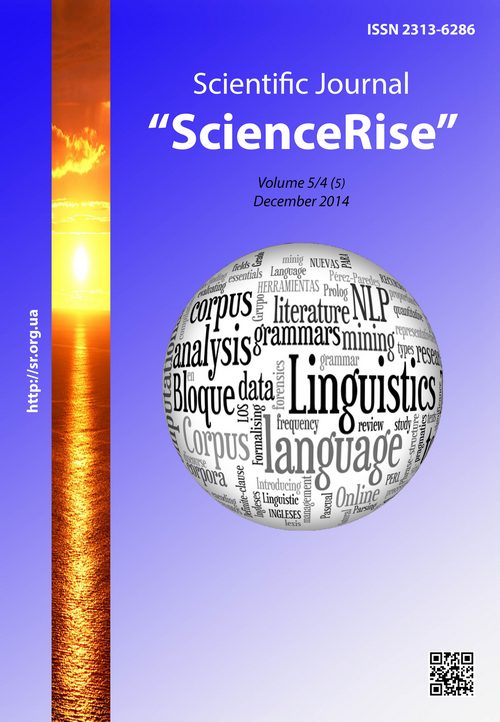К объяснению механизма влияния сдвигового напряжения на вязкостные параметры крови в сосудах малого диаметра
DOI:
https://doi.org/10.15587/2313-8416.2014.35085Ключевые слова:
сигма-эффект, вязкость, эритроциты, деформируемость, водные поры, напряжение сдвигаАннотация
В работе приводятся данные экспериментального подтверждения и физиологическое объяснение феномена Фареуса-Линдквиста в капиллярах, используя анализ профилей осмотической деформируемости красных клеток крови. Показано дозозависимое изменение деформируемости эритроцитов в стадии изотропной сферы при формировании искусственных водных пор (нистатин) и закупорке (PbCl2) имеющихся. Сигма-эффект снижения гематокрита и вязкости в сдвиговом потоке крови через сосуды малого диаметра вызывается обменом жидких фаз между эритроцитом и плазмой.
Библиографические ссылки
Fåhraeus, R., Lindqvist, T. (1931). The viscosity of the blood in narrow capillary tubes. Am. J. Physiol., 96, 562–568.
Medvedev, A. E. (2013). Dvuhfaznaja model' techenija krovi. Rossijskij zhurnal biomehaniki, 17, 4 (62), 22–36.
Moyers-Gonzalez, M., Owens, R. G., Fang, J. (2008). A non-homogeneous constitutive model for human blood. Part. 1. Model derivation and steady flow. Journal of Fluid Mechanics, 617, 327–453. doi: 10.1017/s002211200800428x
Pries, A. R., Secomb, T. W.; Tuma, R. F., Dura, W. N., Ley, K. (Eds.) (2008). Blood Flow in Microvascular Networks. In: Handbook of Physiology: Microcirculation. Аcademic Press, 3–36. doi: 10.1016/b978-0-12-374530-9.00001-2
Sharan, M., Popel, A. S. (2001). A two-phase model for flow of blood in narrow tubes with increased effective viscosity near the wall. Biorheology, 38, 415–428.
Ponomarenko, G. N., Turkovskij, I. I. (2006). Biofizicheskie osnovy fizioterapii. Moscow: Medicine, 176.
Huo, Y., Kassab, G. S. (2009). Effect of compliance and hematocrit on wall shear stress in a model of the entire coronary arterial tree. Journal of Applied Physiology, 107 (2), 500–505. doi: 10.1152/japplphysiol.91013.2008
Xue, X., Patel, M. K., Kersaudy-Kerhoas, M., Bailey, C., Desmulliez, M. P. (2011). Modelling and simulation of the behaviour of a biofluid in a microchannel biochip separator. Computer Methods in Biomechanics and Biomedical Engineering, 14 (6), 549–560. doi: 10.1080/10255842.2010.485570
Johnson, R. M. (1989). Ektacytometry of red blood cells. Methods in Enzymology, 173 (T), 35–54. doi: 10.1016/s0076-6879(89)73004-4
Charm, S. E., Kurland, G. S. (1972). Blood Rheology. In: Cardiovascular fluid dynamics. Vol. 2. Acad. press, London & New York, 202.
Schmid-Schönbein, H. (1981). Factors promoting and preventing the fluidity of blood. Microcirculation. Current physiologic, medical, and surgical concepts. Acad press: N. Y., London, Toronto, Sydney, San-Francisco, 317.
Tsai, S. T., Zhang, R. B., Verkman, A. S. (1991). High channel-mediated water permeability in rabbit erythrocytes: characterization in native cells and expression in Xenopus oocytes. Biochemistry, 30, 2087–2092. doi: 10.1021/bi00222a013
Katsu, T., Okada, S., Imamura, T., Komagoe, K., Masuda, K., Inoue, T., Nakao, S. (2008). Precise size determination of amphotericin B and nystatin channels formed in erythrocyte and liposomal membranes based on osmotic protection experiments. Analytical Sciences, 24 (12), 1551–1556. doi: 10.2116/analsci.24.1551
Ivens, I., Skejlak, R. (1982). Mehanika i termodinamika biologicheskih membran. Moscow: Mir, 304.
Clarc, M. R., Mohandas, N., Shohet, S. B. (1983). Osmotic gradient ektacytometry: comprehensive characterization of red cell volume and surface maintenance. Blood, 61 (5), 899–910.
Bossi, D., Russo, M. (1996). Hemolytic anemias due to disorders of red cell membrane skeleton. Molecular Aspects of Medicine, 17 (2), 171–188. doi: 10.1016/0098-2997(96)88346-4
Johnson, R. M., Ravindranath, Y. (1996). Osmotic scan ektacytometry in clinical diagnosis. Journal of Pediatric Hematology/Oncology, 18 (2), 122–129. doi: 10.1097/00043426-199605000-00005
Streekstra, G. J., Dobbe, J. G., Hoekstra, A. G. (2010). Quantification of the fraction poorly deformable red blood cells using ektacytometry. Optics Express, 18 (13), 14173–14182. doi: 10.1364/oe.18.014173
Tillmann, W. (1986). Reduced deformability of erythrocytes as a common denominator of hemolytic anemias. Wien. Med. Wochenschr., 136, 14–16.
Загрузки
Опубликован
Выпуск
Раздел
Лицензия
Copyright (c) 2014 Лев Николаевич Катюхин

Это произведение доступно по лицензии Creative Commons «Attribution» («Атрибуция») 4.0 Всемирная.
Наше издание использует положения об авторских правах Creative Commons CC BY для журналов открытого доступа.
Авторы, которые публикуются в этом журнале, соглашаются со следующими условиями:
1. Авторы оставляют за собой право на авторство своей работы и передают журналу право первой публикации этой работы на условиях лицензии Creative Commons CC BY, которая позволяет другим лицам свободно распространять опубликованную работу с обязательной ссылкой на авторов оригинальной работы и первую публикацию работы в этом журнале.
2. Авторы имеют право заключать самостоятельные дополнительные соглашения, которые касаются неэксклюзивного распространения работы в том виде, в котором она была опубликована этим журналом (например, размещать работу в электронном хранилище учреждения или публиковать в составе монографии), при условии сохранения ссылки на первую публикацию работы в этом журнале .

